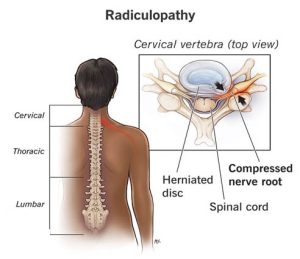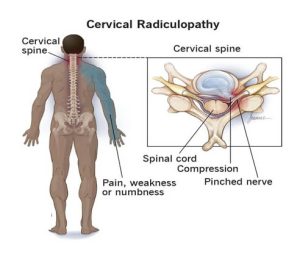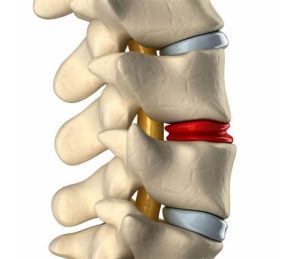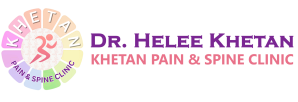Radiculopathy, often referred to as a pinched nerve, is a condition that occurs when a nerve root in your spine is compressed or irritated. This can cause pain, weakness, numbness, and tingling in the area served by the affected nerve.
Causes of Radiculopathy
 There are a number of things that can cause radiculopathy, including:
There are a number of things that can cause radiculopathy, including:
- Herniated disc: This is the most common cause of radiculopathy. A herniated disc occurs when the soft inner material of a spinal disc pushes through a tear in the tough outer shell. The herniated material can compress a nerve root as it exits the spinal canal.
- Bone spurs: Bone spurs, also called osteophytes, are abnormal growths of bone that can develop on the vertebrae in your spine. Bone spurs can compress nerve roots as they exit the spinal canal.
- Spinal stenosis: Spinal stenosis is a narrowing of the spinal canal. This can compress the nerve roots as they exit the spinal canal.
- Spondylolisthesis: Spondylolisthesis is a condition in which one vertebra slips forward over the vertebra below it. This can compress the nerve roots exiting the spine.
- Tumors: Tumors in the spine can compress nerve roots.
- Diabetes: Diabetes can damage nerves throughout the body, including the nerve roots in the spine.
Symptoms of Radiculopathy
The symptoms of radiculopathy will vary depending on the location of the compressed nerve root. The most common symptoms include:
- Pain that radiates along a nerve pathway, such as down the leg (sciatica) or arm
- Weakness in the muscles served by the affected nerve
- Numbness or tingling in the area served by the affected nerve
- Reflex problems
Types of Radiculopathy
The type of radiculopathy you have will depend on the location of the compressed nerve root. The three main types of radiculopathy are:
- Cervical radiculopathy: This type of radiculopathy occurs when a nerve root in the neck is compressed. Symptoms of cervical radiculopathy can include pain, numbness, and weakness in the shoulder, arm, and hand.

- Thoracic radiculopathy: This type of radiculopathy is less common than cervical or lumbar radiculopathy. It occurs when a nerve root in the middle back is compressed. Symptoms of thoracic radiculopathy can include pain, numbness, and weakness in the chest, abdomen, and back.

- Lumbar radiculopathy: This type of radiculopathy is also known as sciatica. It occurs when a nerve root in the lower back is compressed. Symptoms of lumbar radiculopathy can include pain, numbness, and weakness in the buttocks, leg, and foot.

Treatment of Radiculopathy
The treatment for radiculopathy will depend on the severity of your symptoms and the underlying cause. Treatment options include:
- Over-the-counter pain relievers: Over-the-counter pain relievers, such as ibuprofen or acetaminophen, can help to relieve pain and inflammation.
- Prescription pain medication: In some cases, your doctor may prescribe stronger pain medication, such as opioids, to help manage your pain.
- Physical therapy: Physical therapy can help to improve strength, flexibility, and range of motion in the muscles around the spine. This can help to take pressure off the affected nerve root.
- Steroid injections: Steroid injections can help to reduce inflammation around the compressed nerve root.
- Surgery: In some cases, surgery may be necessary to remove the source of compression on the nerve root. This may be necessary if you have a herniated disc, bone spurs, or spinal stenosis.
Radiculopathy Prevention
There are a number of things you can do to help prevent radiculopathy, including:
- Maintain good posture: Good posture helps to keep your spine in alignment and can help to prevent compression of the nerve roots.
- Strengthen your core muscles: Strong core muscles help to support your spine and can help to prevent injuries.
- Maintain a healthy weight: Being overweight or obese can put extra strain on your spine and increase your risk of radiculopathy.
- Quit smoking: Smoking can damage the discs in your spine and increase your risk of radiculopathy.
- Use proper lifting techniques: When lifting heavy objects, be sure to bend at your knees and keep your back straight. Avoid twisting your spine.
